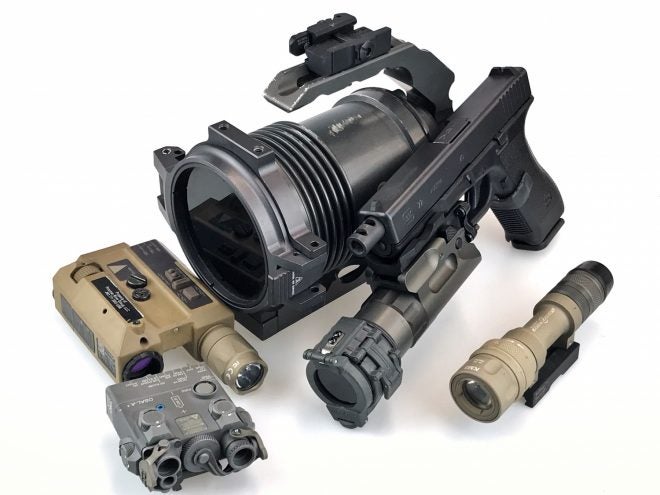If you have been following along our Friday Night Lights series, night vision is a big part of seeing in the dark. While night vision is great at seeing in the dark, it does have its limitations. Night vision can only amplify light that is already there. While some night vision systems do a better job than others in some cases you need to compensate with some IR illumination.
IR Flashlights

Before IR LEDs became so prevalent, the only way to get IR illumination was to use an incandescent light and put an IR filter over the bezel. SureFire made flip-up IR filters for their weapon lights. Even the SureFire Hellfighter has an IR filter.

Old school SureFire IR Filter for incandescent weapon lights.

SureFire Hellfighter with IR Filter
Why do shooters need IR light when they have night vision? As I said earlier, night vision amplifies ambient light but if there is no ambient light then you can’t see anything. Another reason is to light up shadows. Just because you have night vision doesn’t mean there are no more shadows. Areas of mixed lighting like an urban environment can cause stark contrast due to bright street lights thus creating dark shadows. Those bright lights act as a photonic barrier. You need to overcome this barrier with more light. This is where LED IR lights have excelled compared to the old incandescent IR lights. They can push more light and brighten up an area.

You do not always have to aim your IR illumination down range. In some cases, you can point the light up at the ceiling, when you are indoors of course, and use ceiling bounce aka umbrella lighting. Shining the light up at the ceiling will cause the light to bounce back down often diffused and lighting up an entire room. You will see some shooters mount a small IR light on the back of their helmets and they are pointed vertically.
One case scenario for umbrella lighting is searching an attic for a suspect. If the suspect has been sitting in the dark their natural eyesight will have adjusted to the dark and could pick up the faint red glow of an IR light like an IR pistol light. So if you pop your head up into an attic and aim a pistol around they could possibly see it. But a light mounted vertically would not be easily seen.
There are plenty of ways to achieve this. One of the simplest and affordable ways is to use the Echo Arms Fast Attach Mount. It is a curved polymer plate that has a single M-LOK slot and hook velcro underneath. You can mount a weapon light to the plate using a small M-LOK Picatinny rail or get Echo Arms’ MLOK light body. Another option is the Umbrella Torch Mount (UTM) by @paratusfortysix.
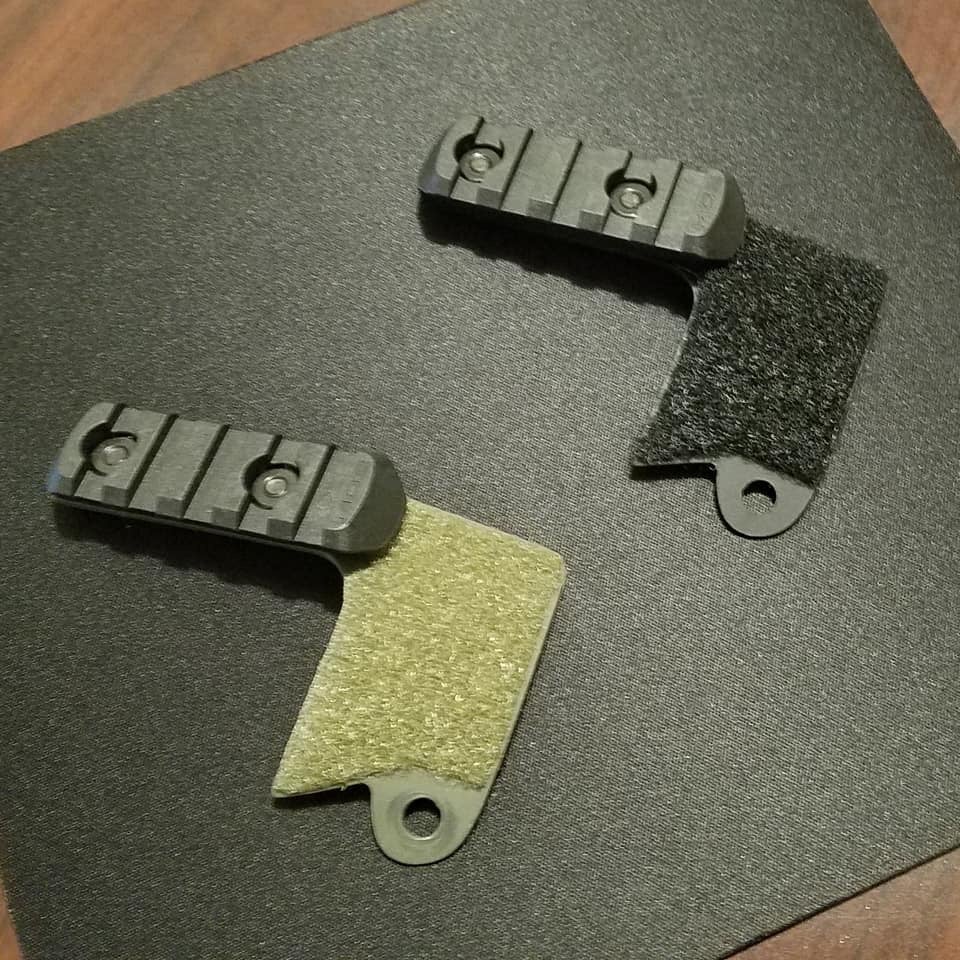


You can also shine your light down at the ground and create a “campfire” like lighting effect. In some cases, a laser will work as well. Here I used the green laser from my MAWL-C1+ to provide some secondary lighting for this photo.
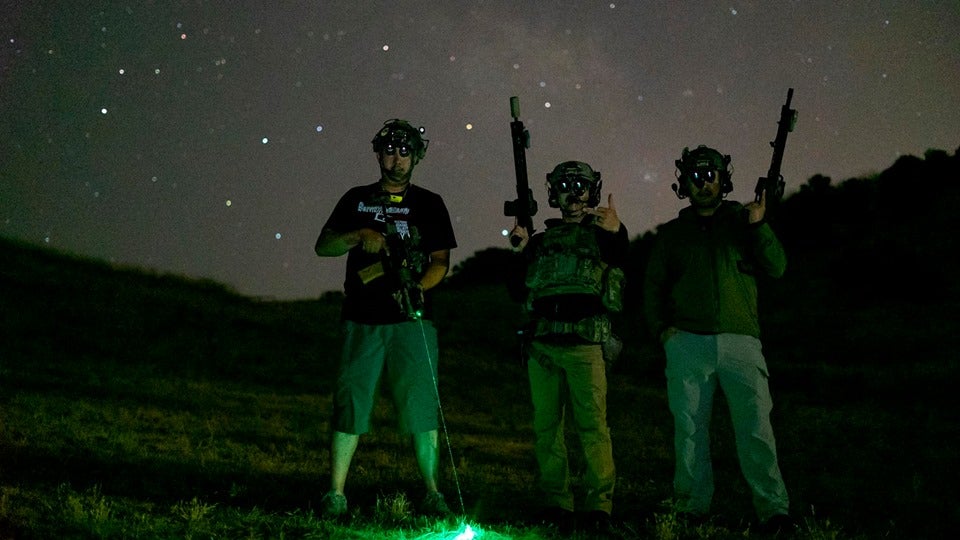
The most common IR weapon lights are the SureFire Scoutlight Vampire series. They have a rotating bezel that can switch from visible to IR light. It is a clever design. To get the best performance the Total Internal Reflection (TIR) reflector sits over a white LED and when you spin the selector ring, the TIR is repositioned over the IR LED. This means that either LED will always be centered in the reflector and give you the best possible beam and not waste any light.

This is the original M952V. It was the vampire light before SureFire shrunk the technology down to fit a Scout Light.

See the two squares? One yellow and the other a dark red? When you spin the head, it moves the reflector over the other LED thus centering it and switching contacts to allow that LED to turn on.
Other lights like the Inforce IR lights have a main white LED in the center of their reflector and four small IR LEDs off center around the white LED. This type of light is fine for close range IR illumination or mounting on a helmet. If you recall, the PK-M51WIR has an off-center LED and while it has 50mw of IR light, it is plagued with blemishes due to the offset design.
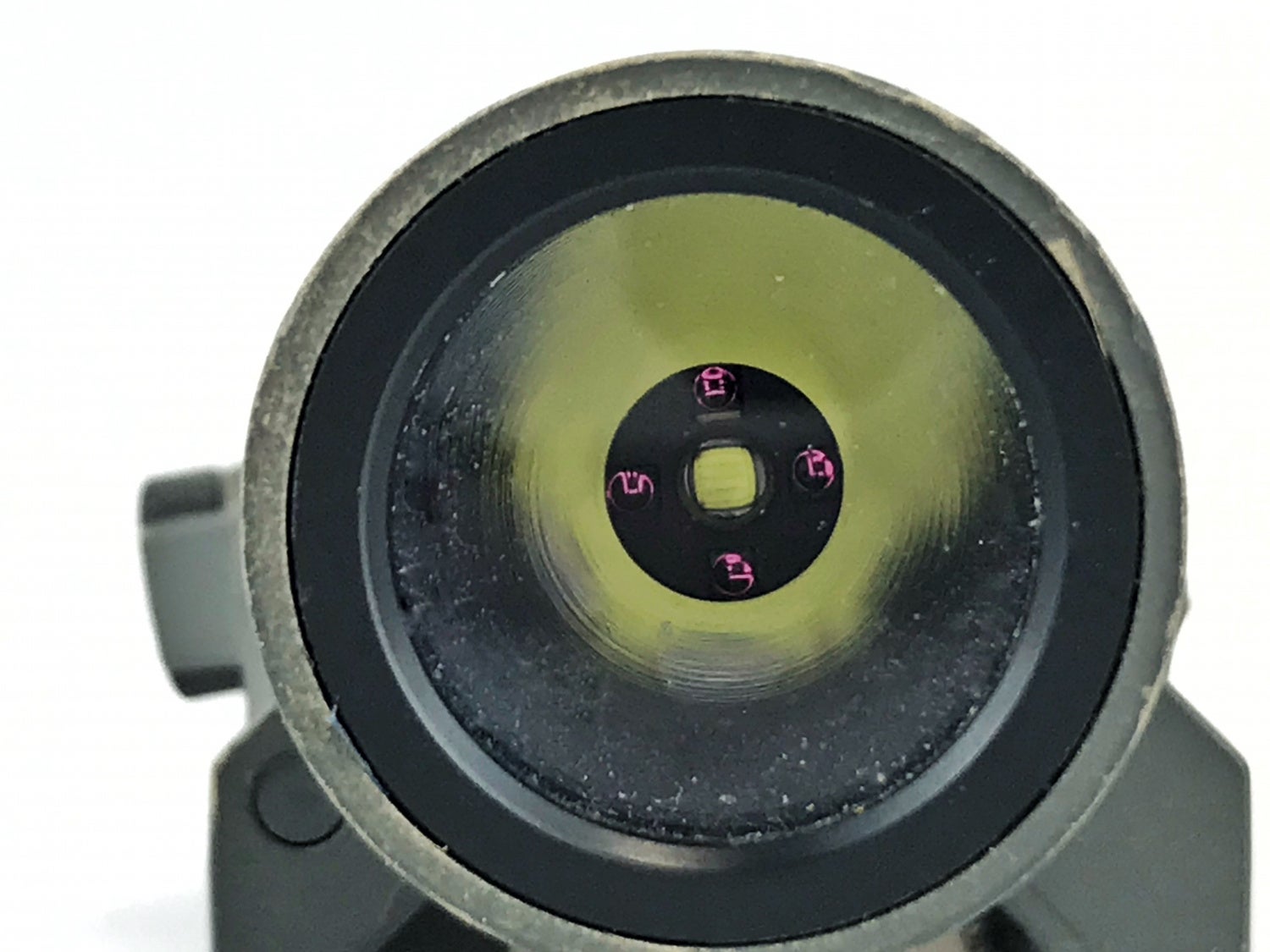
Here is the business end of the Inforce WML. You can see four tiny IR LEDs around the main LED.
Other than really bright lights like the SureFire Hellfighter, many of the IR LED lights are rather limited with regards to range. The SureFire X400V can illuminate out to 200 yards. There is an option by TNVC to throw light further. Their Torch Pro MKII is a zoomable IR LED light.
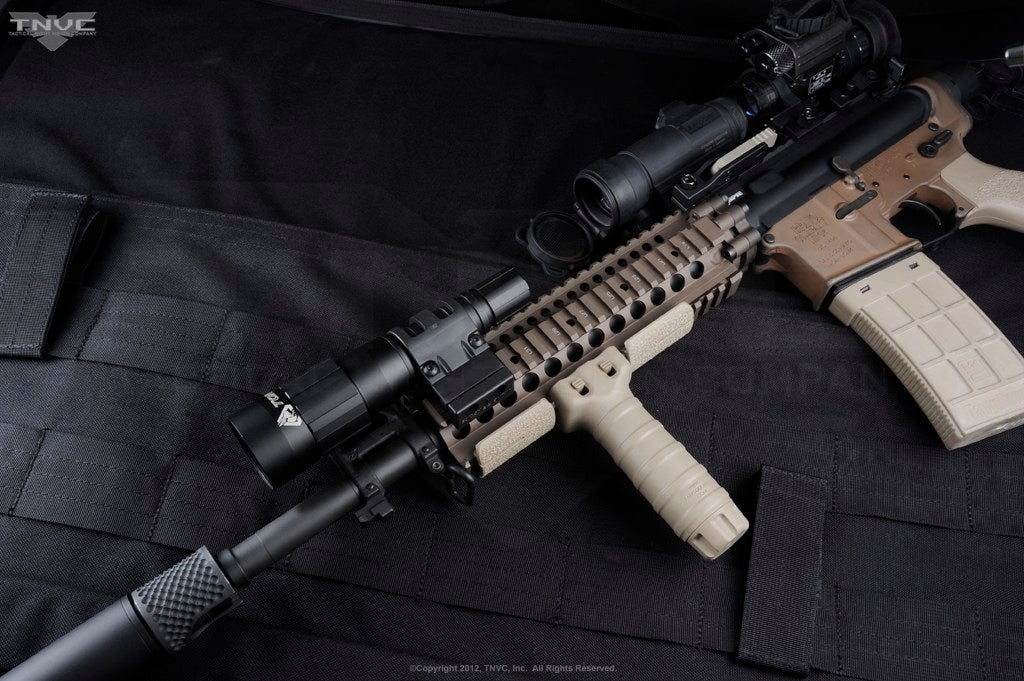

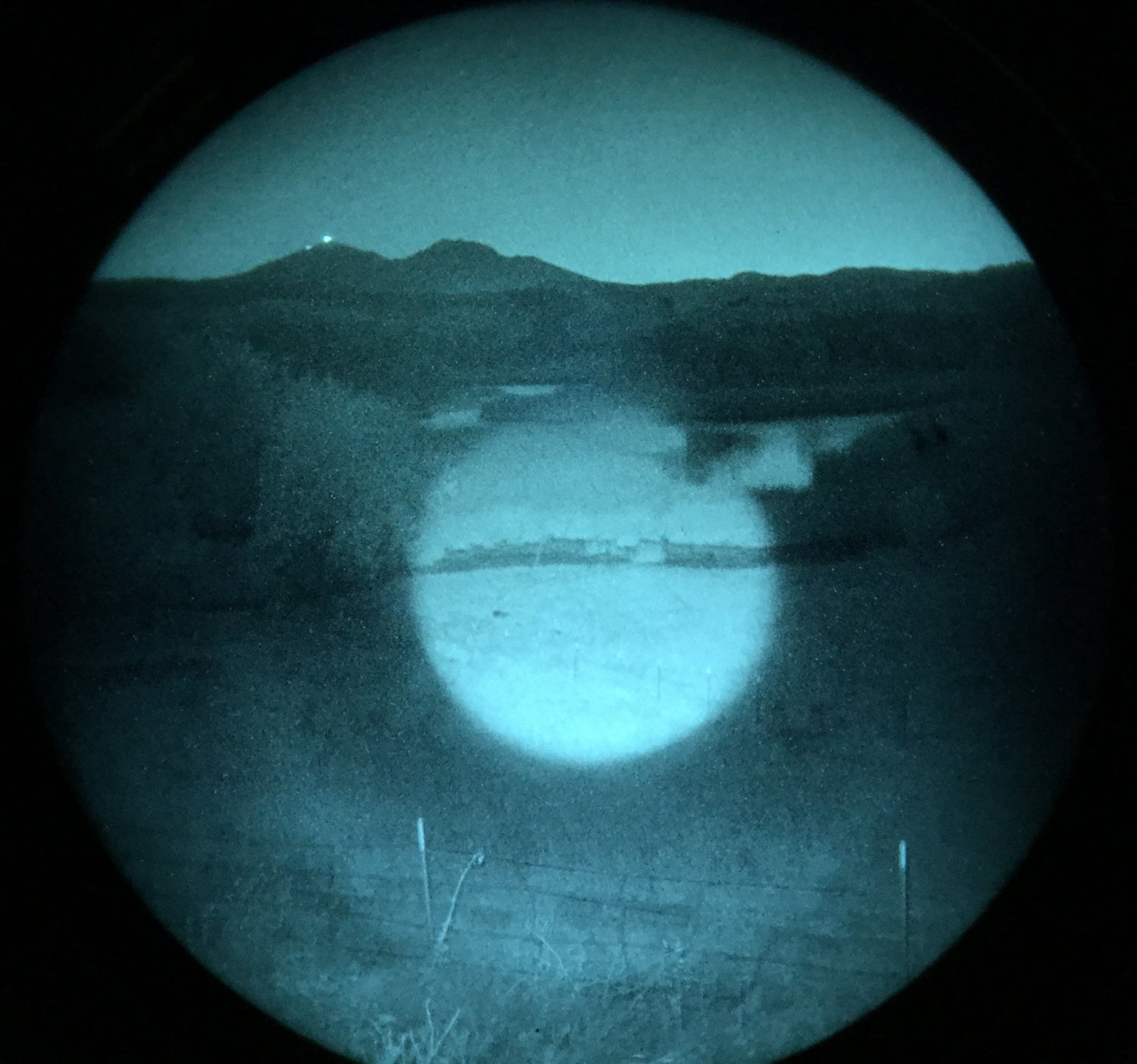
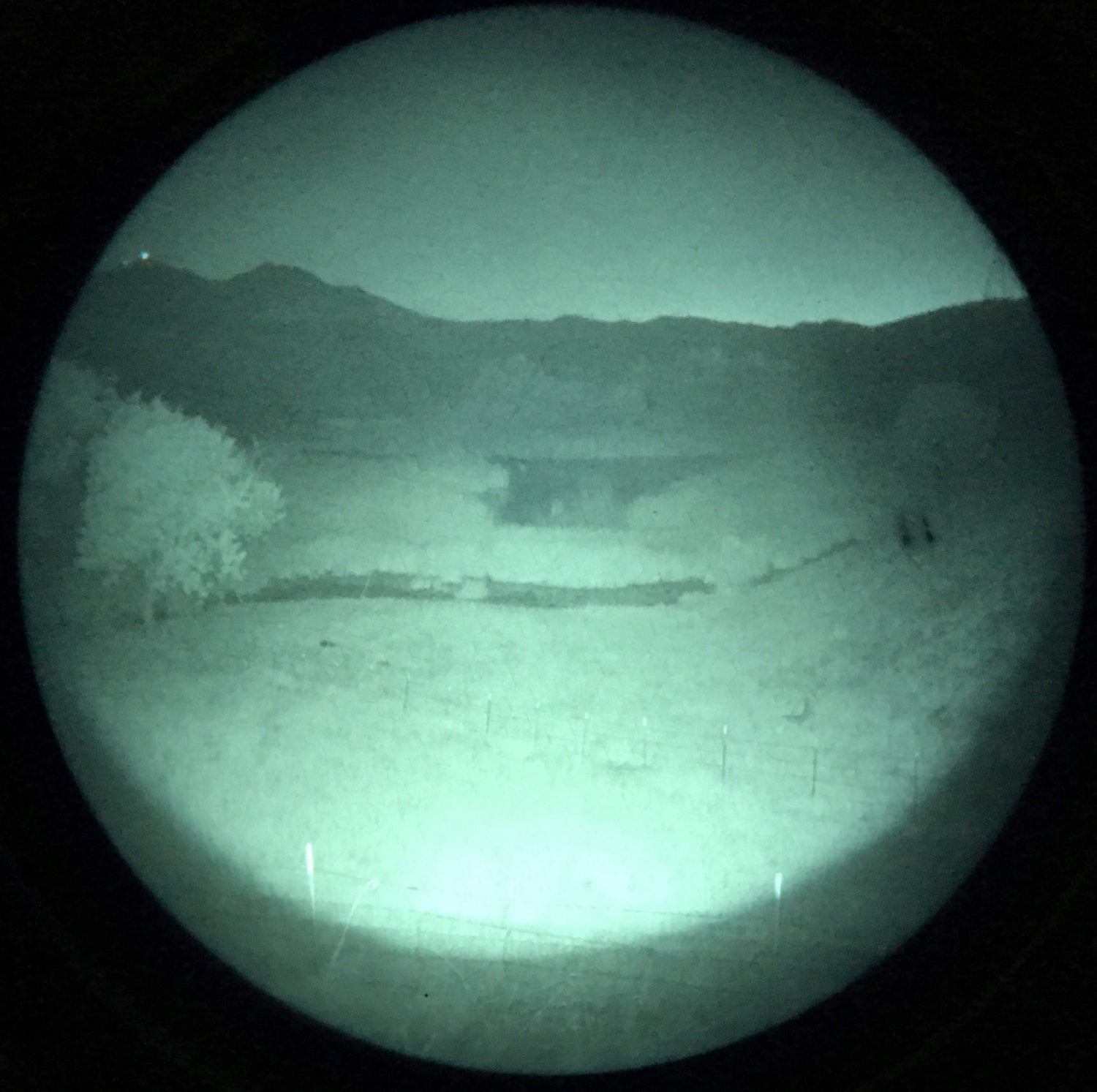
Torch Pro IR illumination at full width.
The Torch Pro is an ok weapon light but where it truly shines is with their 3x magnifier adapter. The adapter allows you to screw on a PVS-14 3x magnifier. This tightens the IR illumination even more and throws that light out to 900 yards. This is a great option for people on a budget who want to illuminate long range targets with a clip-on night vision device.

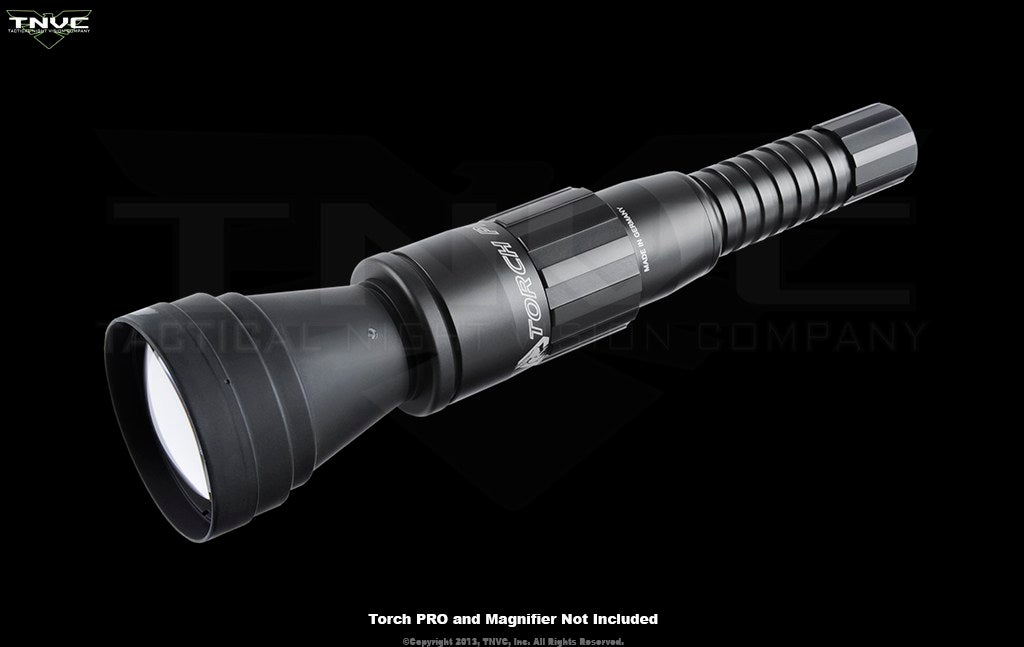
With the 3x magnifier the Torch Pro can throw IR light out to 900 yards. 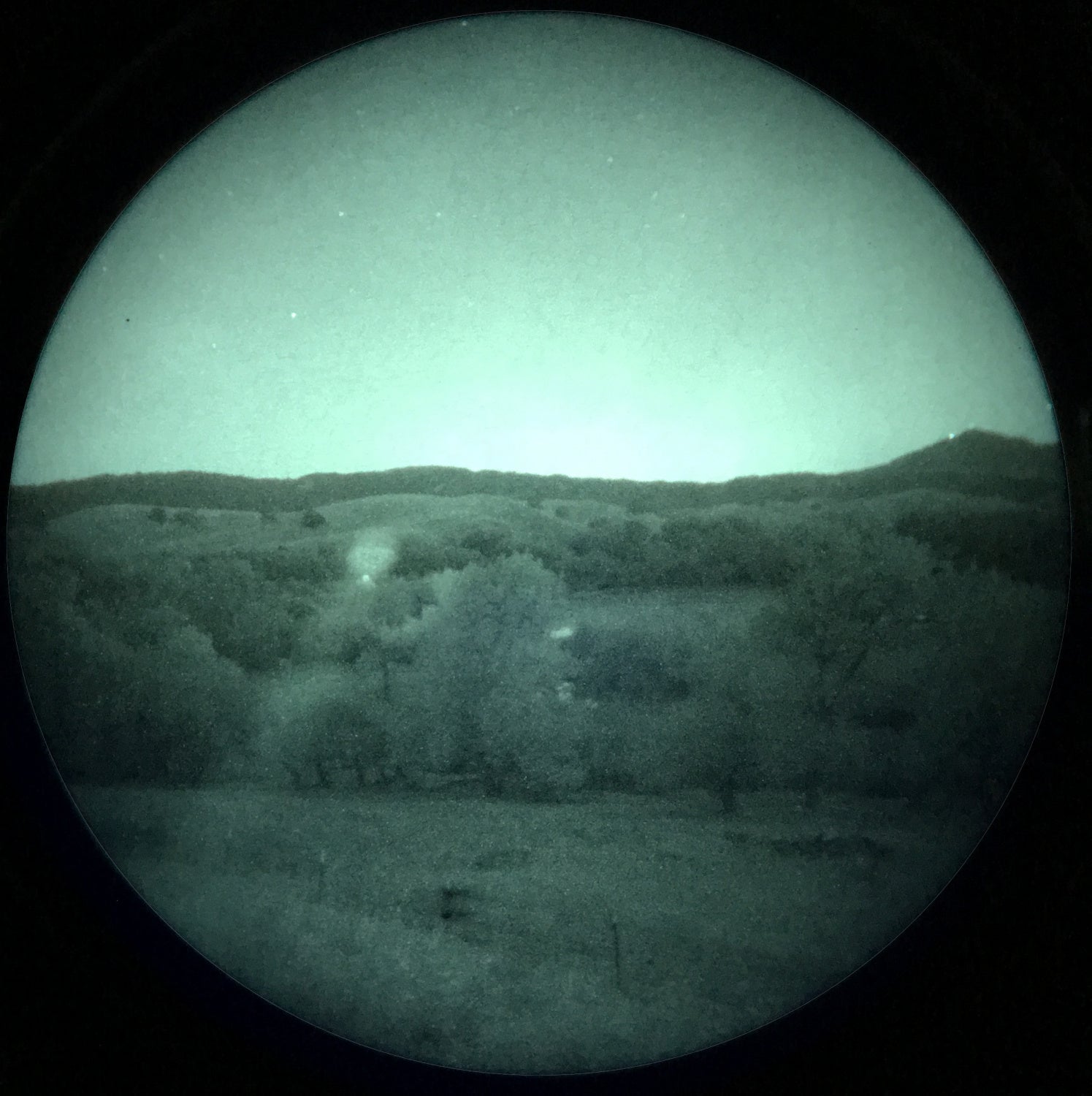
Here is a video of the SureFire Hellfighter equipped with an IR filter. It has enough power to overcome some photonic barriers. Watch the car drive by. The red brake lights appear really bright in the night vision. But once I aim the Hellfighter at it, you can clearly see the rest of the road and trees.
Lasers Are Better Than Lights

There is another type of IR illumination and it comes in the form of an IR laser illuminator. You can find these on multi-function aiming lasers (MFAL) like the PEQ-15/ATPIAL, DBAL, and MAWL-C1+. Even the Wilcox Raptar LITE ES has an IR illuminator.
IR laser illuminators are like laser pointers but their beam has been diverged to create a circle of light more like a flashlight. They can be surgical in nature compared to really bright IR lights like the Modlite IR light. The Modlite IR head pumps out a whopping 1,200mw of IR light. That is staggering compared to the 50mw IR lasers. However, the reason you can have those lights is because that light is not focused enough to cause eye damage.

However, civilian rated MFALs often have anemic IR illuminators. And in most cases, they are almost useless. The MAWL-C1+, on the other hand, is the best laser IR illuminator that is civilian rated. Why are IR lasers regulated? It is all thanks to the FDA. Since lasers have an effect on eyeballs they restrict powerful lasers from being purchased by civilians. IR laser designators (IR laser pointers) have only 0.7mw of power. This is to avoid eye damage if you point the laser at someone’s eye. Since IR light cannot be seen by the naked human eye, it is easy to damage them with more powerful lasers. Visible lasers can be higher in power since you can see them and if the beam hits your eye, you have an automatic blink response. You will shut your eyes or turn your head to protect your eyes.
Going back to the IR light vs IR laser illuminator. Remember the video of the Hellfighter? The Modlite IR head is similar. It is a giant wall of light. When objects get in the way that light bounces back and causes your night vision to dim a little bit. Try illuminating something through a window with a MAWL vs the Modlite. Of course, both of those were designed for completely different reasons but it is something to know when choosing an IR illuminator for a particular reason.
What sets laser illuminators apart from LED illuminators is the fact that lasers focus a lot of light in the same direction. Like I said, the MAWL has a great IR illuminator. Below is a picture of the MAWL illuminator shining out to 800 yards.
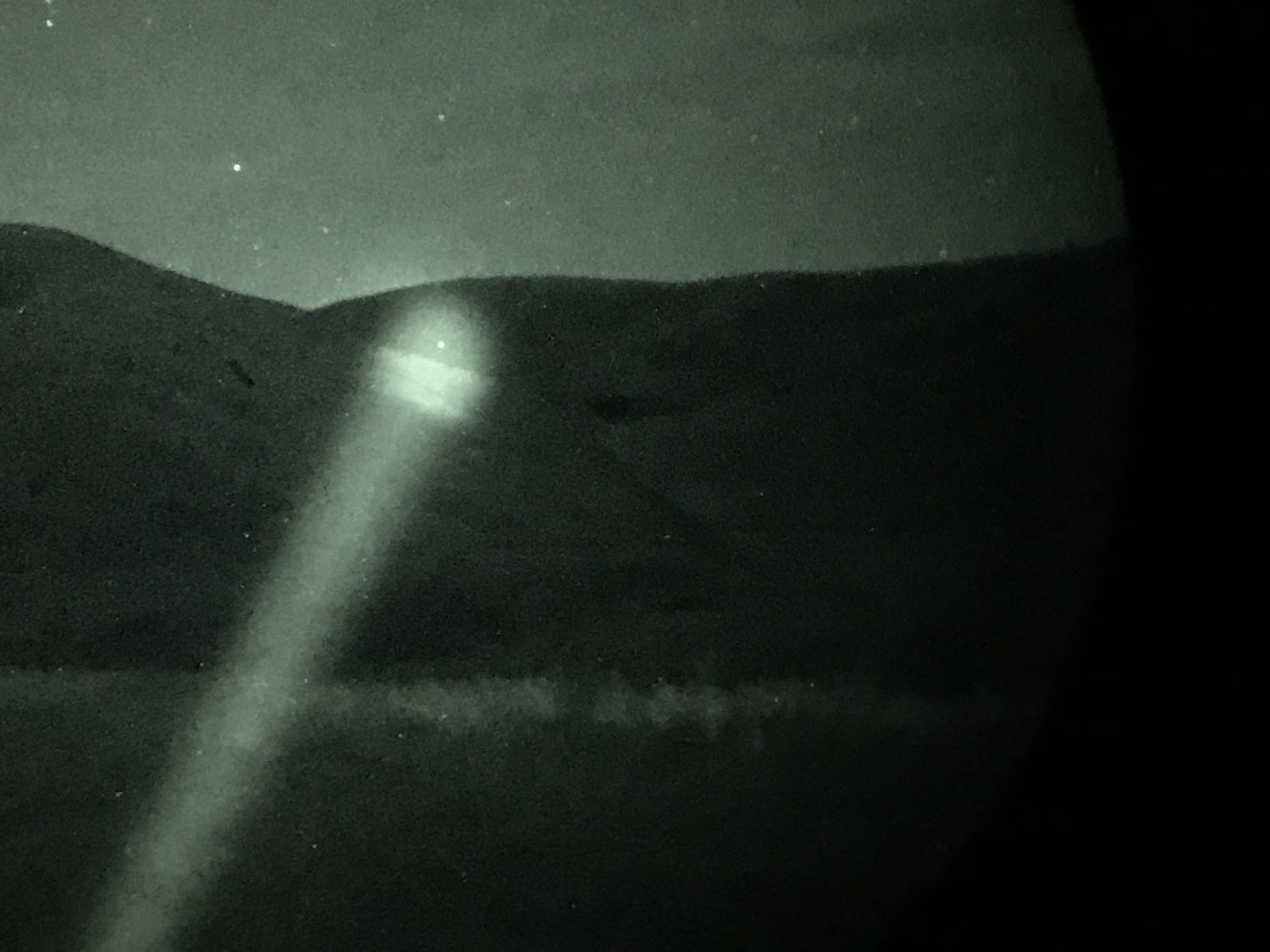
Normal civilian IR illuminators like those on civilian DBALs or my Wilcox RAPTAR LITE ES are not that great. Below is the Wilcox RAPTAR LITE ES illuminator. You can dial the illuminator down to a point but it is just not as powerful. This is only about 70 yards and it is about as good as a flashlight.
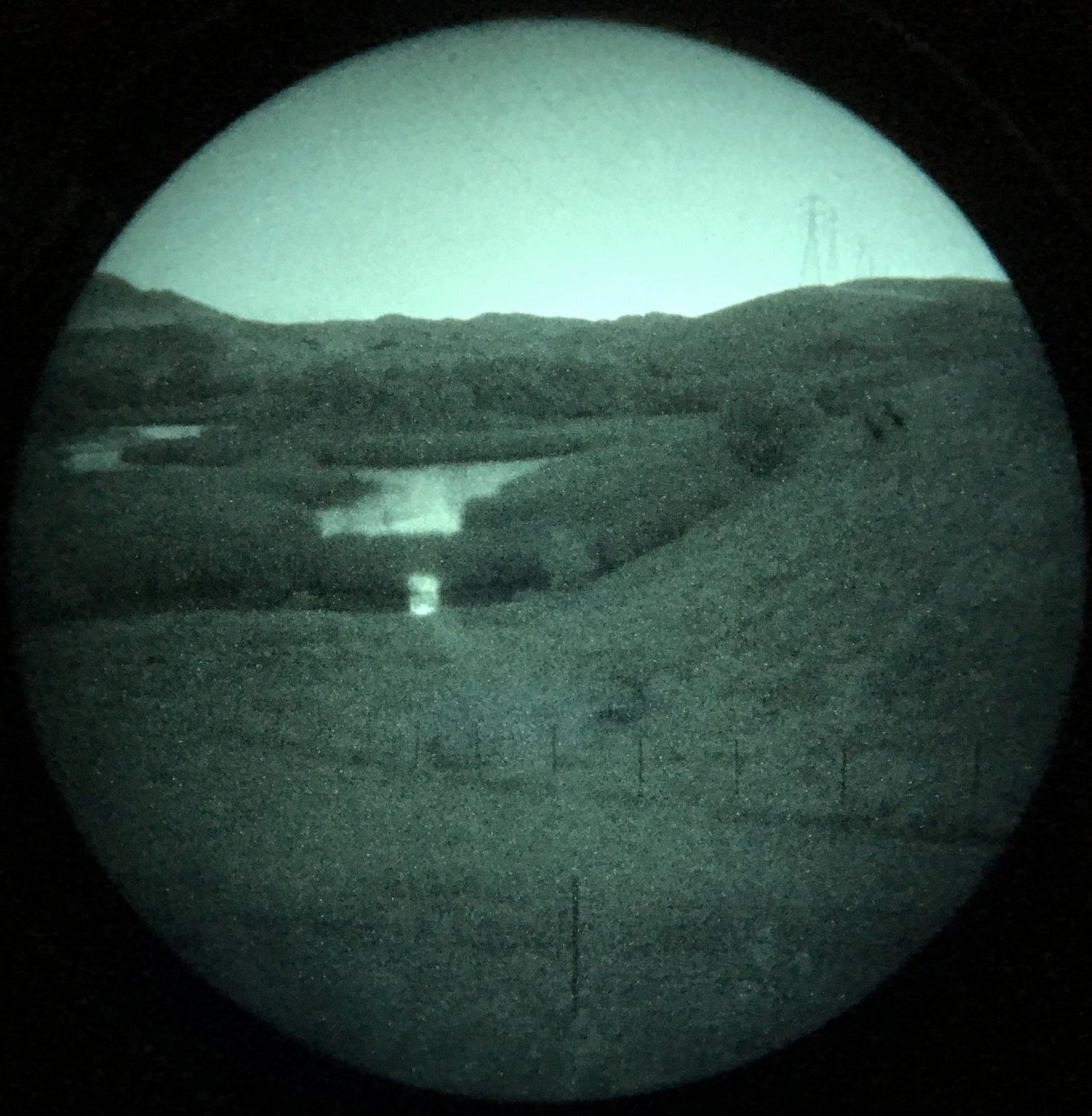
For long-range illumination, a full power laser really shines. My friend Vic of Spartan Rifles often uses a PVS-26 and shoots out to 900 yards depending on ambient light. On a full moon, he can see the targets. But on a night with less light, his Wilcox RAPTAR struggles to illuminate the further targets. I brought out a DBAL-A2 which has a full power illuminator. One crucial aspect that I like about the DBAL is the fact that it is adjustable for windage and elevation. In order to see targets 900 yards and beyond with the PVS-26, I have to narrow the illuminator a bit. When we tested it for the first time, the illuminator was not zeroed to the scope at those distances. The MAWL, while it has the best civilian IR illuminator, has a long-range illuminator but you cannot adjust its size nor aim it. However, at further distances, the beam is so wide that it will cover what you are looking at. On a good night, it was able to illuminate 800-yard steel. Although my friend Vic knows where all the targets are so it was easy for him.
Below is a photo of Vic engaging a 900-yard target. You can see his Wilcox RAPTAR laser on the left compared to the full power DBAL.
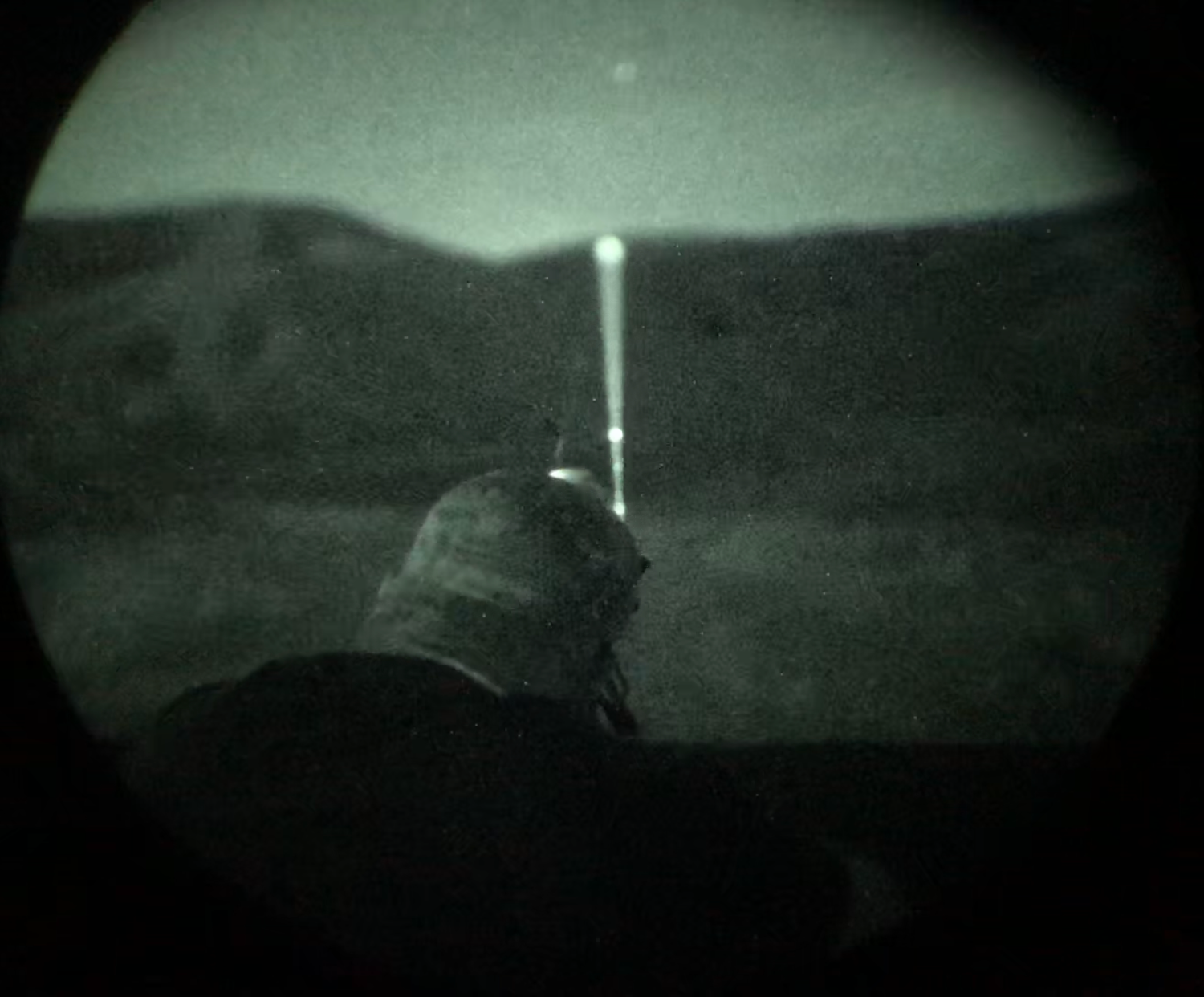
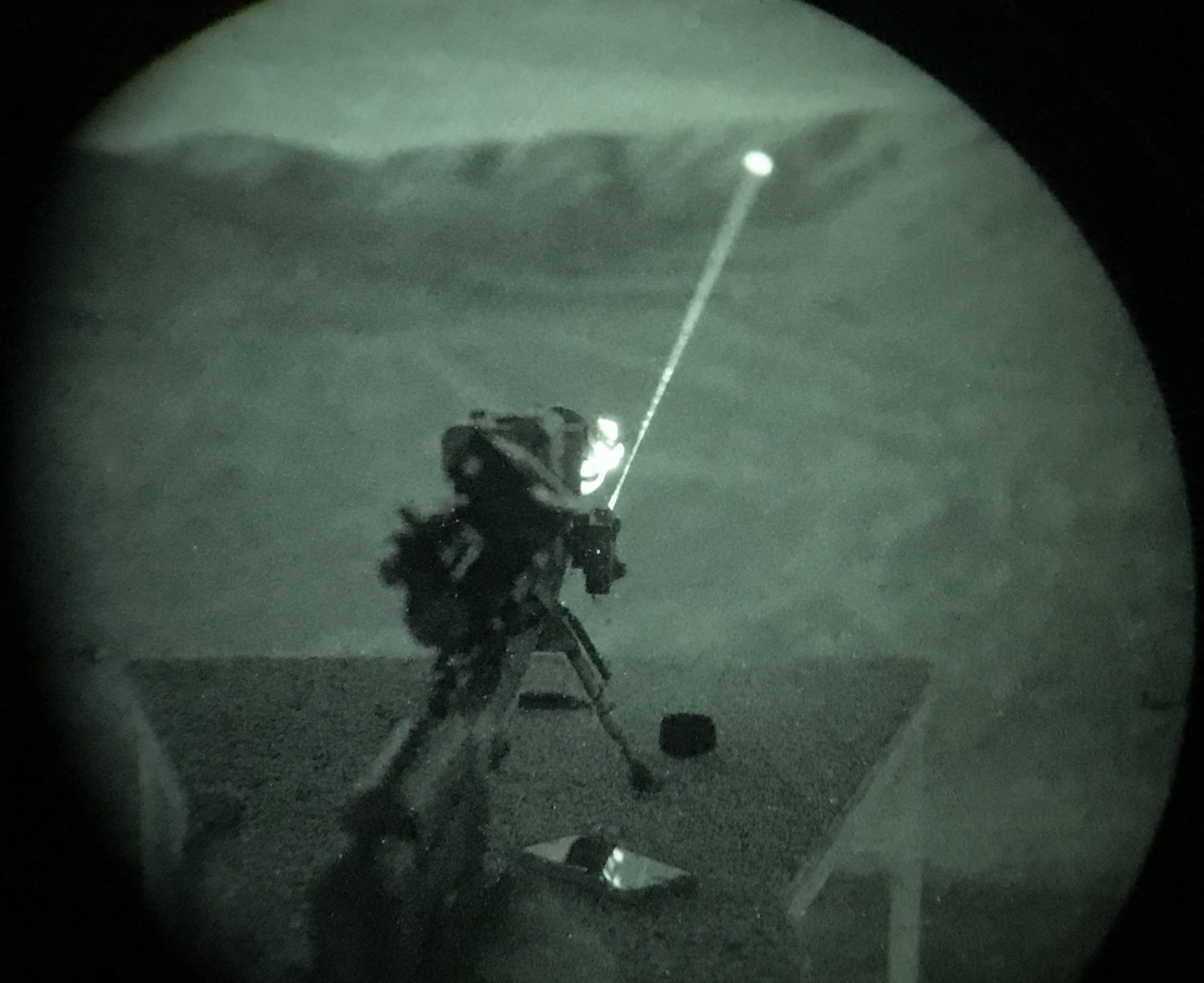

As seen through the PVS-26 at a 900-yard target. See the rectangle? It is more clear in the scope than what the camera can portray.
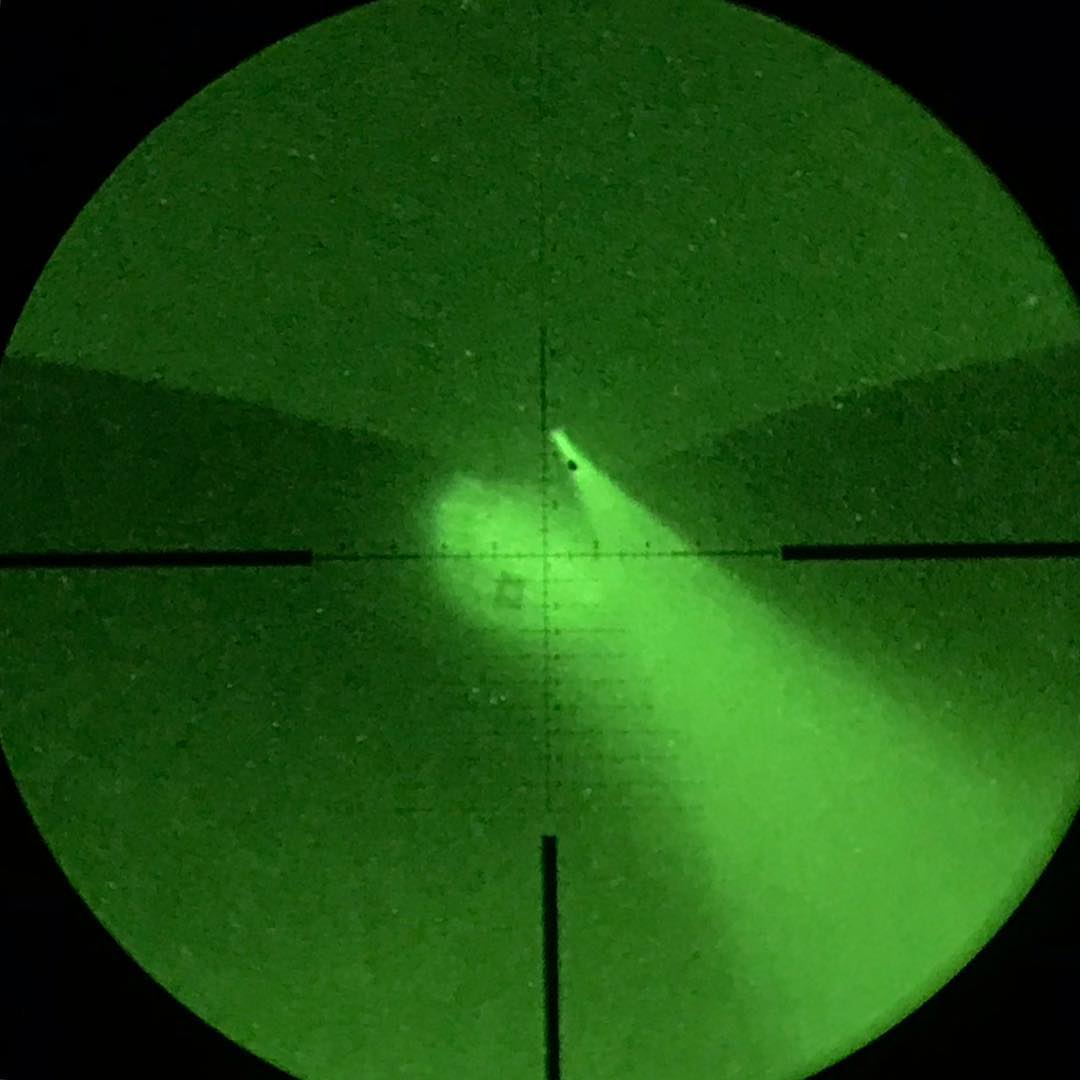
Even though the PVS-26 is not made for seeing past 1000 yards, I was able to illuminate reflective signs 1400 yards away with the full power DBAL-A2. Below is a photo looking through Vic’s scope which is looking through the PVS-26.

Lights Out, Illuminators On
Illumination, whether it is infrared or visible, should involve good light discipline. Leaving lights on can tell others where you are and if you are going up against someone who can see your light then you want to keep stealth as an advantage. IR illumination is a very critical tool that enhances the use of night vision. Just like a flashlight, they have specific uses and in some cases are a tactical advantage. Choose the right one for the task at hand. Eye-safe rated MFAL illuminators are not that great compared to IR LED lights like the Modlite IR head unless it is the MAWL-C1+. But even the MAWL has its limitations if you want to shoot long range. There is a whole wide range of IR illumination to light up your night, go and try them out.
We are committed to finding, researching, and recommending the best products. We earn commissions from purchases you make using the retail links in our product reviews. Learn more about how this works.
 Your Privacy Choices
Your Privacy Choices
